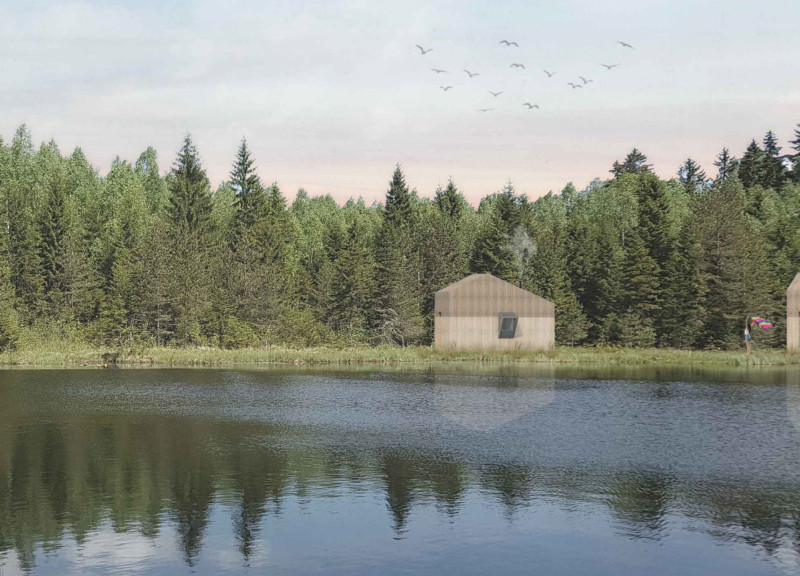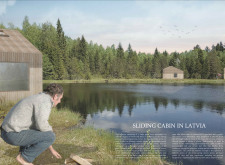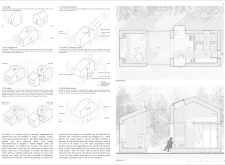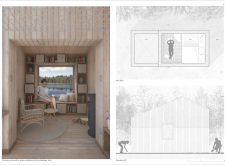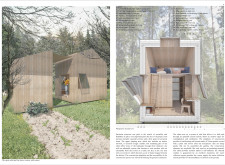5 key facts about this project
The design features a modular configuration that adapts to varying user needs and environmental conditions. This adaptability is achieved through a sliding mechanism that allows the cabin to adjust its form and orientation, maximizing views and engagement with the landscape. Predominantly constructed with sustainable materials, the Sliding Cabin prioritizes ecological responsibility while maintaining contemporary aesthetic values.
Modular Configuration and Adaptive Design
The Sliding Cabin employs a modular design approach that enables efficient use of space. Each section of the cabin serves specific functions, including a service area, sleeping quarters, and a communal living space. The integration of these elements allows for fluid movement and interaction among occupants, creating a versatile environment. The choice of large windows and open spaces enhances natural light and promotes a seamless transition between indoor and outdoor experiences.
The sliding mechanism is a defining feature of this project. By enabling structural flexibility, this design promotes user engagement with the natural surroundings. As users shift the cabin’s configuration, they can control their levels of privacy and exposure to the landscape. This unique aspect distinguishes the Sliding Cabin from conventional architectural forms, embodying a responsive relationship to its environment.
Sustainable Practices and Material Choices
Sustainability is at the forefront of the Sliding Cabin's design philosophy. The project integrates several environmental features, including a water collection system for rainwater harvesting and photovoltaic panels for renewable energy. Each element contributes to the cabin's self-sufficiency, reducing its ecological footprint.
Material selection plays a critical role in the project’s overall efficiency and aesthetic appeal. The structure primarily utilizes treated pine for exterior cladding alongside engineered X-Lam panels, which provide insulation and structural integrity. Transparent glazing enhances the connection with the outdoors, and recycled steel elements contribute to durability. Natural insulation materials further ensure thermal comfort and promote sustainable living practices.
The Sliding Cabin represents a significant advancement in architectural design, merging functionality with ecological awareness. Its unique attributes and adaptive capabilities position it as a noteworthy project within contemporary architecture. To gain deeper insights into the specifics of this project, including architectural plans, sections, and design ideas, interested readers should explore the project presentation for full details.


